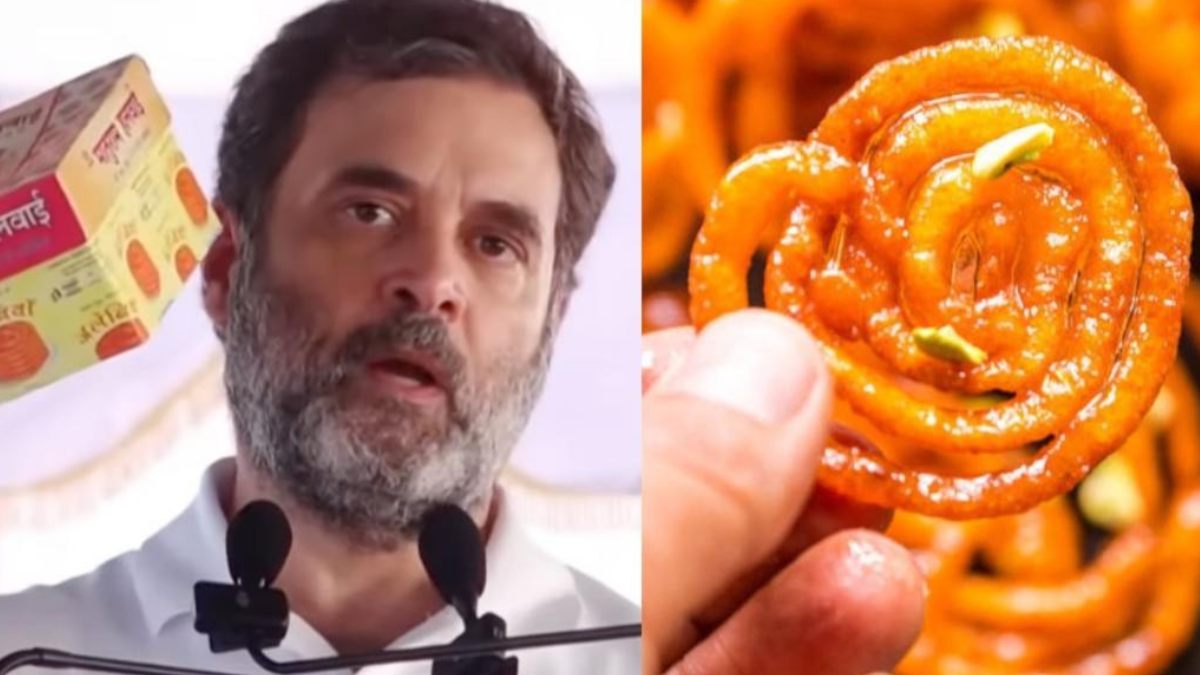The high-voltage assembly elections in Jammu and Kashmir and Haryana are over and the political landscape is also clear now – BJP has retained Haryana for the third straight term and the National Conference has got the popular mandate in J&K. On October 8, when the votes were being counted and the results were being declared, two words that created a huge buzz were – Jats and Jalebis. The Congress, whose assembly election campaign was designed keeping the two words – Jats and Jalebis – in mind, had to eventually taste a bitter defeat instead of a sweet victory. So, how did Jats and Jalebis come into the contest of assembly elections and why did the two words become a hot trending topic?
For the unversed, it all started when Rahul Gandhi jokingly suggested that Gohana’s jalebis should be sold all over the country – the idea now seems as messy and confusing as the popular sweet dish itself.
The Congress leader, while addressing a rally in Haryana’s Gohana with a box of jalebis in hand, said, “These jalebis should be exported.” Rahul Gandhi said with great enthusiasm and optimism, suggesting that jalebis could generate employment. It was actually a campaign strategy of the Congress party – both bizarre and misguided, and in hindsight, almost laughable. Rahul Gandhi’s political rivals, of course, had a field day. Taking a dig at Rahul Gandhi, senior BJP leader Ravi Shankar Prasad quipped that Gandhi seemed more clueless about making jalebis than making policies.
But it wasn’t just the jalebi that failed to deliver – it was the Congress’ overreliance on the Jat factor that left the party stranded in the sugarcane fields of Haryana. The Jats, historically a dominant voting bloc, didn’t rally behind Congress as expected. Factionalism within the community, internal squabbles within the party, and the BJP’s strategy to reach out to the non-Jat voters turned what was supposed to be Congress’ sweet revenge into a bitter realization.
Jalebi Politics: How It Began?
On the counting day, as the trends started pouring in, Congress had taken an early lead and buoyed by this, its party workers in Delhi started distributing ‘jalebis’ to celebrate. But much like their fortunes in the election, the sweets soured as the day progressed. The Narendra Modi-powered BJP made a dramatic comeback, turning the tables on the Congress and walking away with a third consecutive term in Haryana. In a twist of political irony, it was now the BJP headquarters placing a massive order for the ‘jalebis’ a not-so-subtle jab at Rahul Gandhi’s ill-fated Gohana sweet strategy.
What was meant to be a light-hearted campaign moment became symbolic of Congress’ colossal electoral drubbing: relying too much on symbolism and too little on substance. While Rahul Gandhi’s focus on Gohana’s jalebis may have generated a few laughs, it did practically nothing to win over sceptical voters grappling with unemployment, inflation, and other issues of their day-to-day concern.
Jats Vs Non-Jats
The most important factor which is to be blamed for the Congress party’s defeat, however, was its failure to secure the Jat votes. For many years, Haryana’s Jat community has been a traditional vote bank for the party. But in 2024, that strategy flopped. Factionalism within the Jats, coupled with rising anger over the Congress’ internal squabbles, gave the BJP the edge it needed. While Congress banked on a 10-year anti-incumbency wave, it underestimated how effectively BJP had consolidated support among non-Jat communities, including urban voters and the youth.
Rather than capturing the Jat vote, Congress was torn apart by infighting between its own Jat leaders, giving the BJP a golden opportunity to stitch a winning coalition. In the end, the Jats may have still been important, but Congress’ reliance on a single community made it vulnerable.
Despite securing nearly 39% of the vote share, just a fraction behind the BJP, Congress couldn’t translate those votes into seats. However, the BJP’s strategy of reaching out to non-Jat communities in key constituencies – alongside its focus on issues like infrastructure and governance – helped it clinch victory. Congress’ dream of an electoral comeback in Haryana evaporated, and what was supposed to be a sure-shot win turned into yet another defeat in a series of setbacks for the party.
So, as BJP workers now munch on their jalebis, one can only wonder: did the Congress truly believe a policy to export jalebis would sway voters in Haryana? Or did it forget that, in politics, the path to success is rarely as sweet or as simple as a coil of crispy jalebi? Either way, one thing is clear – this was no sweet election for the Congress, and both Jats and Jalebis left them with nothing but an empty plate.













